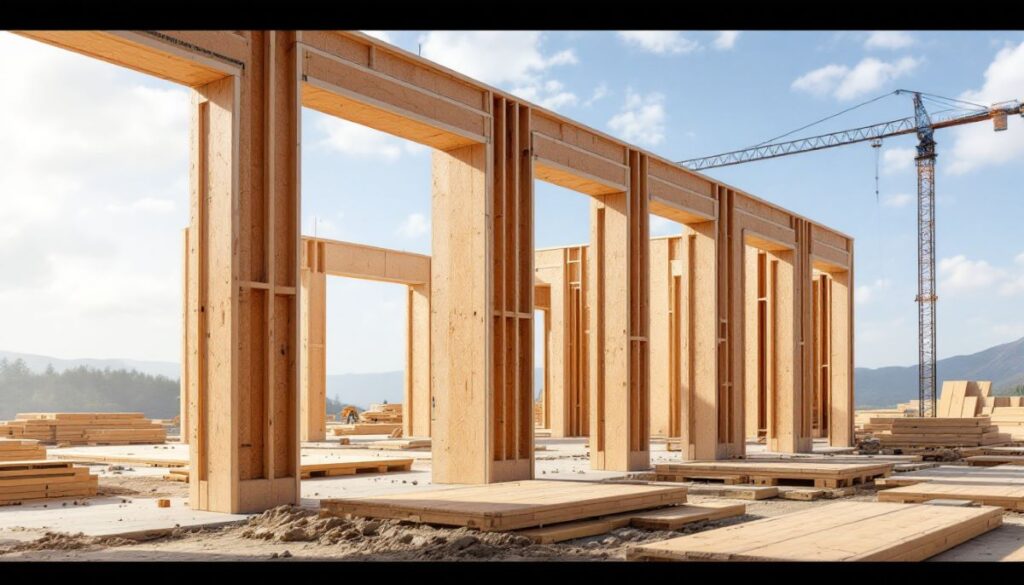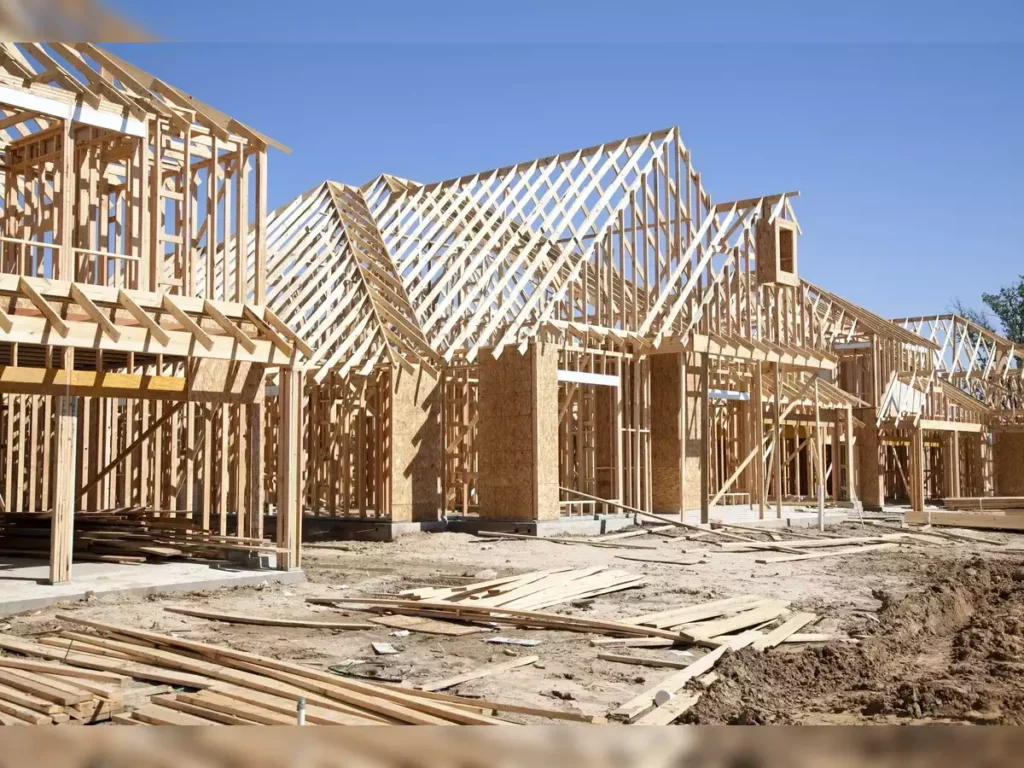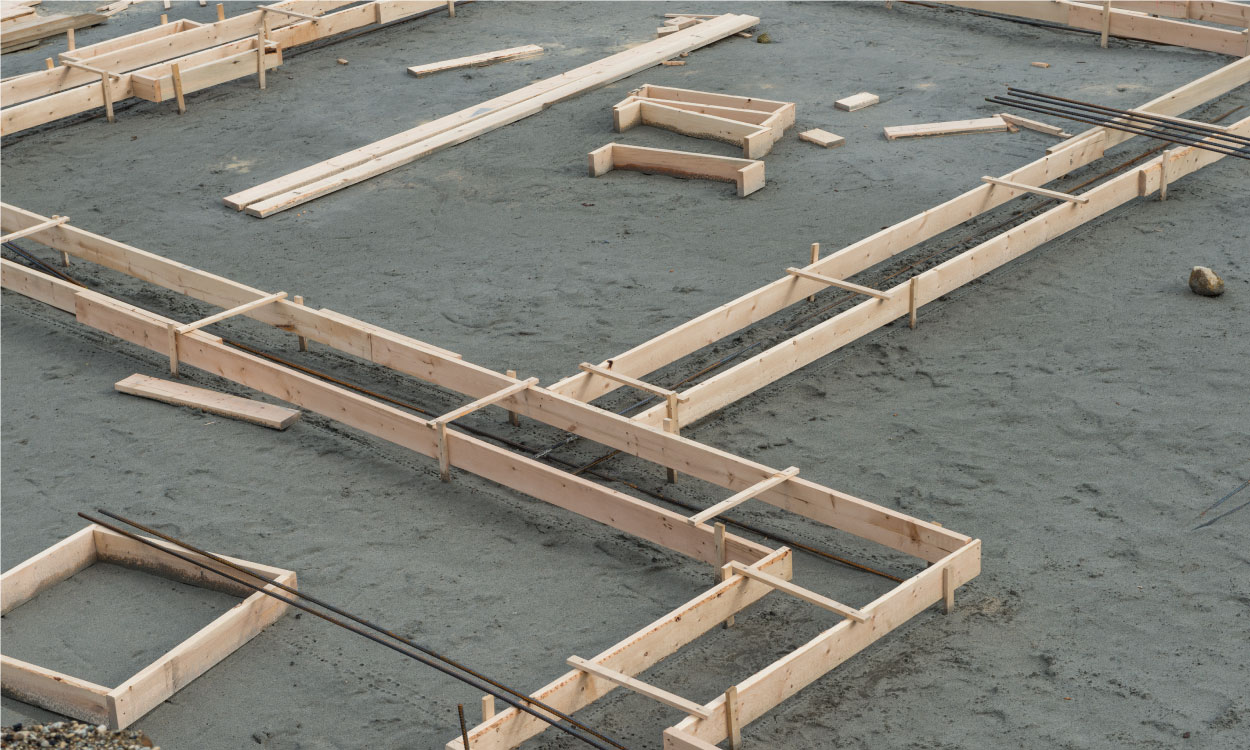What Is Formply and How Is It Made?
Formply is a type of engineered plywood panel specifically designed for use in concrete formwork applications on construction sites in Australia. Unlike regular plywood products, Formply is made with multiple layers of hardwood veneers and has a special surface treatment that makes it ideal for this purpose.
How is Formply Made?
The manufacturing process involves bonding together sheets of hardwood veneer using a technology called phenolic resin bonding. What sets Formply apart is that during the lamination process, phenolic resin-impregnated paper is applied to both sides of the panel. This creates a smooth, non-porous surface that prevents concrete from sticking while still maintaining the strength of the panel.
Key Features of Formply
Some of the key features that make Formply suitable for concrete formwork include:
- Durability: It can withstand multiple pours of concrete without getting damaged.
- Water resistance: The phenolic overlay on the plywood repels moisture effectively.
- Smooth finish: The surface is designed to be smooth, which helps prevent any issues with concrete sticking.
- Consistent thickness: Each panel has a uniform thickness, ensuring that the surfaces created by the formwork are also uniform.
Formply panels made for the Australian market meet the standards set by AS/NZS 6669, which ensures that they are of consistent quality and performance. This means you can rely on these panels to deliver good results every time you use them, making them a popular choice among professional builders looking for cost-effective solutions for their formwork needs.
Why Do Builders Prefer Formply Over Other Plywood Types?
There are several reasons why builders prefer Formply over other types of plywood, such as standard construction plywood and marine-grade alternatives. Here are some key factors that set Formply apart:
1. Durability
The durability of Formply sets it apart from standard construction plywood and even marine-grade alternatives. While standard plywood deteriorates quickly when exposed to concrete’s alkaline environment, Formply’s phenolic resin surface maintains its integrity through multiple pours. Marine plywood, though water-resistant, lacks the specialised surface treatment needed for clean concrete release.
2. Superior Finishing Quality
High-density overlay (HDO) technology gives Formply a decisive advantage in concrete finishing quality. The smooth, non-porous surface prevents concrete adhesion, eliminating the pitted or textured finishes common with untreated plywood. You’ll achieve consistently smooth concrete surfaces that require minimal post-pour finishing work.
3. Structural Strength Options
Structural strength ratings from F14 to F22 allow builders to match panel specifications precisely to load requirements. F14 panels handle standard residential applications, while F17 and F22 grades support heavy commercial and infrastructure projects. This range eliminates over-specification costs whilst ensuring structural adequacy.
4. Cost Savings Through Reusability
The reusability factor delivers significant cost savings. Quality Formply panels withstand 20-50 uses with proper handling, compared to 3-5 uses for standard plywood. Combined with superior moisture resistance, this extended lifespan reduces material costs per pour substantially, making Formply the economical choice for projects requiring multiple concrete pours.

How Does Formply Support High-Quality Concrete Finishes?
The smooth surface of Formply creates a non-stick barrier that prevents concrete from bonding to the formwork during curing. This characteristic stems from the high-density overlay (HDO) treatment, which forms a sealed surface that resists moisture penetration and concrete adhesion.
HDO plywood benefits extend beyond surface quality to deliver consistently clean concrete finishes across multiple pours. The phenolic resin coating eliminates the need for release agents in many applications, reducing both material costs and preparation time on site.
Easy stripping becomes possible due to Formply’s engineered surface properties. You’ll find that forms separate cleanly from cured concrete without leaving residue or requiring excessive force, which protects both the formwork and the finished concrete surface.
The versatility of Formply supports diverse construction applications:
- Slabs: Creates level, smooth horizontal surfaces for floors and decks
- Walls: Delivers consistent vertical finishes without texture transfer
- Columns: Maintains uniform cylindrical surfaces in structural elements
- Curved forms: Bends without compromising surface integrity for architectural features
This concrete finish quality reduces the need for post-pour treatments, grinding, or patching, saving both time and labour costs whilst ensuring professional results that meet Australian construction standards.
What Role Does Sustainability Play in Formply Australia’s Offerings?
Sustainable forestry practices form the foundation of Formply Australia manufacturing approach. The company sources raw materials exclusively from legal forest plantations that operate under strict environmental management protocols. These certified plantations ensure timber harvesting occurs without depleting natural forest resources or disrupting local ecosystems.
The environmental benefits LVL formwork and traditional Formply offer extend beyond responsible sourcing. Formply’s engineered construction maximises timber utilisation efficiency, reducing waste during production. The panels’ durability allows multiple reuses on construction sites, minimising the need for frequent replacements and reducing overall material consumption.
Modern construction projects increasingly demand materials that meet stringent environmental standards. Formply addresses these requirements through:
- Reduced carbon footprint compared to steel or concrete alternatives
- Extended service life minimising replacement frequency
- Recyclable components at end-of-life stage
- Lower transportation emissions due to lightweight properties
Australian builders recognise that sustainable materials like Formply help projects achieve green building certifications whilst maintaining structural performance standards. The construction industry’s shift towards environmentally responsible practices makes Formply an essential choice for contractors committed to sustainable building methods without compromising on quality or durability.
What Are the Key Applications of Formply in Australian Construction?
Formply panels are essential for commercial construction projects throughout Australia, providing reliable outcomes in office buildings, retail centres, and mixed-use developments. These engineered panels are used to create smooth concrete finishes for walls, columns, and architectural elements that define contemporary commercial spaces.
Applications in Civil Infrastructure Projects
Civil infrastructure projects heavily depend on the strength and reusability of Formply. The panels are particularly effective in:
- Bridges and tunnels where intricate curved forms require accuracy
- Car parks needing repetitive concrete pours with uniform quality
- Water treatment plants and sewage systems
- Road construction and highway overpasses
Benefits for Industrial Buildings
Industrial buildings benefit from Formply’s capacity to support heavy concrete loads while preserving surface quality. Manufacturing facilities, warehouses, and processing plants use these panels for their sturdy construction needs.
Solutions for High-Rise Buildings
High-rise buildings pose distinct challenges that Formply solves with its superior strength-to-weight ratio. The panels facilitate vertical concrete pours in apartment towers, office complexes, and mixed-use developments where precision and dependability are crucial for project success. Construction teams value the material’s consistent performance across various concrete pours, lowering material costs by prolonging panel lifespan.
How Does Proper Installation Affect the Performance of Formply and Related Materials?
LVL formwork installation best practices directly impact both structural integrity and project economics. You need to ensure vertical panels receive adequate bracing every 600mm to prevent deflection during concrete pours. Horizontal applications require proper support spacing based on your specific load calculations – typically 400-450mm centres for standard residential work.
The key lies in understanding load distribution patterns. When you install LVL formwork with correct alignment and secure fastening, you’ll achieve maximum strength ratings whilst reducing material waste. Poor installation practices can compromise the entire concrete structure, leading to costly repairs and delays.
Reo bar installation best practices complement formwork performance significantly. You must maintain proper cover distances – typically 20mm for slabs and 40mm for external walls – to ensure adequate concrete protection. Correct spacing between bars allows concrete to flow freely around the reinforcement, preventing honeycombing and weak spots.
Your reo bar placement timing matters enormously. Installing reinforcement after formwork positioning but before concrete pouring ensures optimal structural integration. Proper tie-wire techniques and chair supports maintain bar positioning throughout the pour, delivering the designed structural strength your project requires.
What Maintenance Practices Ensure Longevity of Formply on Site?
Formwork plywood maintenance strategies directly impact your project’s bottom line through extended panel lifespan and consistent concrete finishes. You can achieve maximum reuse cycles by implementing systematic care practices that protect your Formply investment.
Immediate Post-Pour Care
- Remove concrete residue whilst still wet using plastic scrapers
- Apply release agents before each use to prevent concrete adhesion
- Inspect panels for edge damage or surface deterioration after stripping
Storage and Handling Protocols
- Stack panels flat with timber bearers every 600mm to prevent warping
- Cover stored Formply with waterproof sheeting to protect from moisture
- Handle panels with two operators to avoid stress fractures at corners
Surface Treatment Maintenance
You should sand lightly between uses to maintain the smooth HDO surface that delivers quality concrete finishes. Edge sealing with appropriate sealants prevents moisture ingress that compromises the phenolic resin bond.
Regular Inspection Schedule
Check for delamination, particularly around bolt holes and high-stress areas. Replace panels showing signs of structural compromise rather than risking concrete quality issues. Proper maintenance extends Formply Australia panel life to 50+ pours under optimal conditions.

How Do Additional Materials Like Reo Bars Complement Formply Usage?
Reo bars serve as the structural backbone that transforms Formply formwork from a temporary mould into part of a permanent reinforced concrete system. When you position these steel reinforcement bars within Formply forms, you create the framework for concrete structures that meet reo bars Australian construction standards and deliver exceptional load-bearing capacity. Visit https://treasury.gov.au/policy-topics/housing/building-and-construction to get more about building and construction.
The relationship between Formply and reo bars is symbiotic in nature. Formply’s smooth HDO surface prevents concrete adhesion whilst maintaining precise positioning of your reinforcement steel. This precision becomes critical when you’re working with complex structures where reo bar placement directly affects structural integrity.
Key complementary benefits include:
- Formply’s dimensional stability maintains accurate reo bar spacing during concrete pours
- The plywood’s strength prevents deflection that could compromise reinforcement positioning
- Clean release properties protect reo bars from concrete contamination
- Multiple reuse capability reduces material costs across reinforced concrete projects
You’ll find this combination particularly effective in vertical applications like walls and columns, where Formply supports the weight of wet concrete whilst keeping reo bars in their engineered positions. The result is reinforced concrete that achieves design specifications for both strength and durability.
Why Is Choosing the Right Grade and Size Important When Buying Formply?
Selecting the appropriate F14 vs F17 plywood grade directly impacts your project’s structural integrity and cost efficiency. F14 formply handles lighter loads with a maximum bending strength of 14 MPa, making it suitable for residential slabs and basic wall forms. F17 formply delivers superior performance at 17 MPa, essential for high-rise buildings, bridges, and heavy-duty applications where maximum structural support is critical.
The guide to LVL sizes Australia reveals standard dimensions ranging from 1200mm x 2400mm to 1200mm x 3600mm panels. You need to match panel thickness—typically 12mm, 17mm, or 19mm—to your specific load requirements and concrete pressure expectations.
Key considerations when selecting grades:
- F14: Cost-effective for standard residential work
- F17: Premium strength for commercial and infrastructure projects
- Panel size: Larger panels reduce joints but require proper handling equipment
- Thickness: Thicker panels provide greater load capacity but increase material costs
Choosing incorrectly sized or graded formply leads to structural failure, safety hazards, and expensive project delays. You must evaluate load calculations, concrete pressure, and reuse frequency before making your selection.
Related : Timber LVL Formwork Prices: What Influences the Cost?

